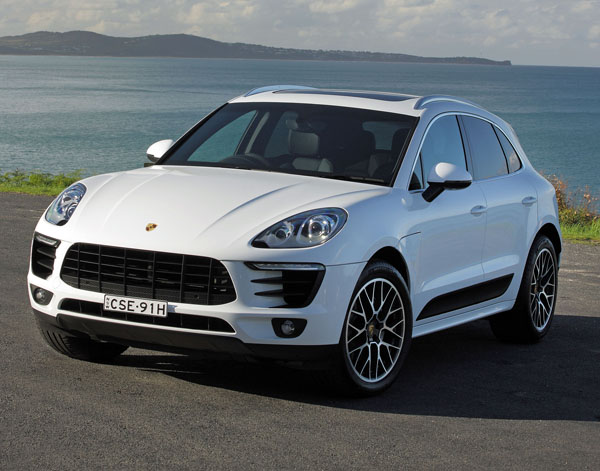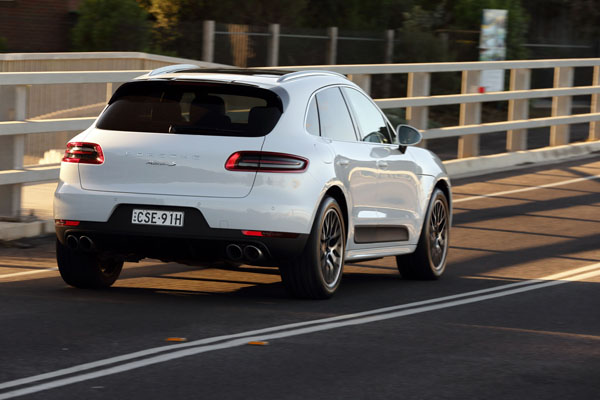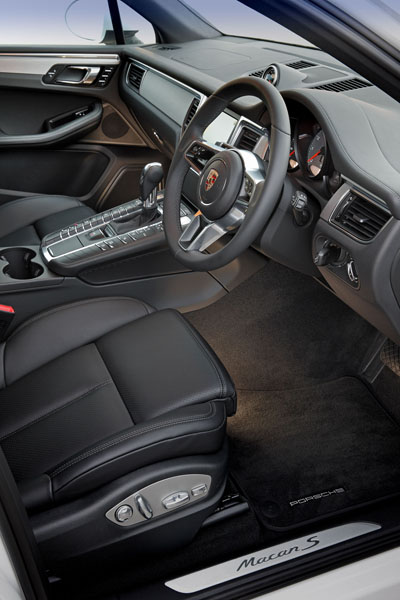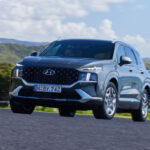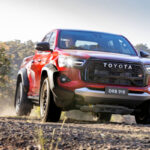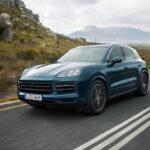Porsche Macan is only the second crossover SUV from the German sportscar maker in modern times. Interestingly, Ferdinand Porsche probably designed the first ever 4WD. In 1900 he came up with a vehicle that used an all-wheel-drive system in the Lohner-Porsche racing car, which had four electric wheel-hub motors.
In the 2014 Le Mans 24-hour race the Porsche racers used electric motors in their drivetrains – seems the old man was right all those years ago.
Anyhow, onto the all-new Porsche Macan. The name Macan comes from the Indonesian word for tiger. Given the sometimes fierce war of words between the Australian and Indonesian governments, the name ‘tiger’ seems appropriate.
STYLING
The Macan joins it’s older, bigger brother Porsche Cayenne on the showroom floor. It certainly looks as though the stylists have learned a lesson from their first attempt. Cayenne received plenty of praise for its dynamics, but a fair bit of criticism about the ‘jacked-up 911’ shape. Macan does it so much better in our opinion.
The stylists have given us many design elements from Porsche sportscars, not just the Cayenne. The large grille takes the bulk out of the front, while still giving the Macan a recognisably Porsche bonnet and headlights look.
ENGINES / TRANSMISSIONS
Porsche Macan S is powered by a 3.0-litre V6 twin-turbo petrol engine delivering 250 kW of power. This lets the Macan S we tested accelerate from 0 to 100 km/h in 5.4 seconds, even better is the 5.2 seconds with the installation of the optional Sport Chrono package. These are sportscar numbers, which probably doesn’t come as a surprise given the Macan’s roots.
There’s also a turbo-diesel as well as a full-on high-performance model in the Macan Turbo. Wouldn’t mind getting our backsides into them as well. Stay tuned while we contact the PR man at Porsche…
Every model has Porsche’s seven-speed double-clutch PDK transmission with shifter paddles for driver overrides.
SAFETY
It goes without saying that the all-new Porsche Macan gained five stars from the testing authorities. It has eight airbags to top off many other safety items built right into the body.
We also don’t need to say that this Porsche will do everything it can to avoid a crash, not only by having excellent chassis dynamics, but also through the use of numerous electronic crash avoidance or minimisation aids.
DRIVING
Front seats are well shaped and provide good support, the rears are okay for adults but tall folks in the front may have to give up a little leg space at times. The sloping roof is probably designed more for cruising at 175 km/h all day in Germany, than in providing maximum cargo space.
The rear-end looks great and is probably our favourite area of the overall design. The slope does limit the volumes of boxy items unless you are able to put the 40/20/40 seatbacks down. Having said that the overall volume is good and the Porsche wagon can swallow plenty of normal luggage.
While high-speed aerodynamics are wasted in most of Australia, those who visit the Northern Territory can enjoy what’s sure to be a very satisfying experience.
Road grip and the general feel of this midsize wagon are most impressive. The latest evolution of Porsche Traction Management (PTM) helps make the best use of the power on offer.
Porsche Vectoring Plus distributes the ideal levels of drive torque to the correct wheels and works in conjunction with an electronically controlled rear-axle diff lock.
Ride comfort is very good and the engineers have probably set their sights just to the sporty side of the eternal sports/comfort compromise.
An interesting feature is Porsche Dynamic Light System Plus (PDLS Plus), which continuously adjusts the headlight level in keeping with oncoming traffic as well as vehicles ahead of yours. This will be an added safety feature when you make the aforementioned trip to the NT.
Official European fuel consumption figures for the Macan S are between 8.7 and 9.0 litres per hundred kilometres. On road we found that these numbers could be obtained on motorways, but around town, admittedly with a fair bit of spirit to our driving style, 11 to 13 litres per hundred seemed to be the norm. Anyway, these are still impressively low numbers for wagon with the performance and enjoyment Macan provides.
SUMMING UP
Porsche Macan enters an already hard fought market segment that includes SUVs from Audi, BMW, Mercedes and Range Rover. The Porsche’s sportier looks and feel seem sure to play a big part in its sales push but it will be very interesting to see which way buyers move.
AT A GLANCE
MODEL RANGE
Macan S Diesel 3.0-litre turbo-diesel five-door wagon: $84,900 (automatic)
Macan S 3.0-litre V6 turbo-petrol five-door wagon: $86,700 (automatic)
Macan Turbo 3.6-litre V6 turbo-petrol five-door wagon: $122,400 (automatic)
Note: These prices do not include dealer or government charges. Contact your local Porsche dealer for driveaway prices.
FEATURES
ABS Brakes: Standard in all models
Automatic Transmission: Standard in all models
Cruise Control: Standard in all models
Dual Front Airbags: Standard in all models
Front Side Airbags: Standard in all models
Electronic Stability Program: Standard in all models
Rear Parking Sensors: Standard in all models
Reversing Camera: Standard in all models
USB/Auxiliary Audio Inputs: Standard in all models
Satellite Navigation: Standard in all models
Bluetooth: Standard in all models (phone and audio)
Steering Wheel Mounted Controls: Standard in all models
SPECIFICATIONS (Porsche Macan S 3.0-litre twin-turbo petrol five-door wagon)
ENGINE:
Capacity: 2.997 litres
Configuration: Mid-mounted, six cylinders horizontally opposed
Head Design: DOHC, four valves per cylinder
Compression Ratio: 9.8:1
Bore/Stroke: 96.0 x 69.0 mm
Maximum Power: 250 kW @ 5500-6500 rpm
Maximum Torque: 460 Nm @ 1450-5000 rpm
DRIVELINE:
Driven Wheels: AWD
Manual Transmission: Not offered
Automatic Transmission: Seven-speed
Final Drive Ratio: 3.88:1
DIMENSIONS, WEIGHT AND CAPACITIES:
Length: 4681 mm
Wheelbase: 2807 mm
Width: 1923 mm
Height: 1624 mm
Turning Circle: 11.0 metres
Kerb Mass: 1865 kg
Fuel Tank Capacity: 65 litres
Towing Ability: Not supplied
Boot Capacity: 500 litres (1500 litres with rear seatbacks lowered)
SUSPENSION AND BRAKES:
Front Suspension: Fve-arm wishbone axle; coil springs with internal, hydraulic, twin-tube, gas-filled shock absorbers
Rear Suspension: Trapezoidal-wishbone axle; cylindrical coil springs with internal, hydraulic, twin-tube, gas-filled shock absorbers
Front Brakes: Ventilated Disc
Rear Brakes: Ventilated Disc
PERFORMANCE:
0-100 km/h Acceleration: 5.4 secs
FUEL CONSUMPTION:
Type: Petrol 98RON
Combined Cycle (NEDC): 8.7 L/100km
GREEN VEHICLE GUIDE RATINGS:
Greenhouse Rating: 6/10
Air Pollution Rating: 7.5/10
STANDARD WARRANTY:
Two years/unlimited km




